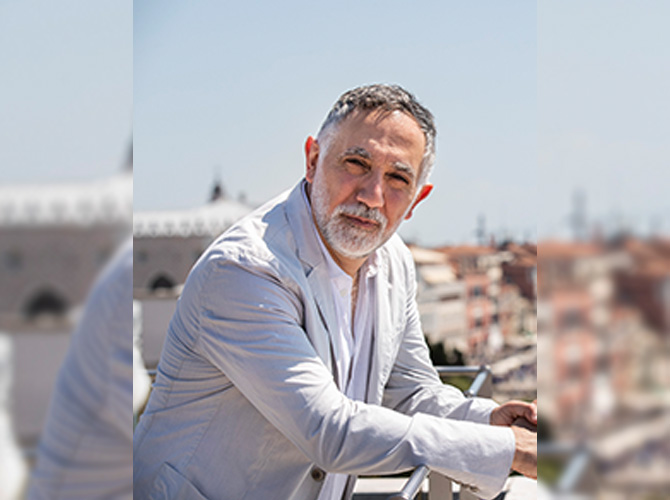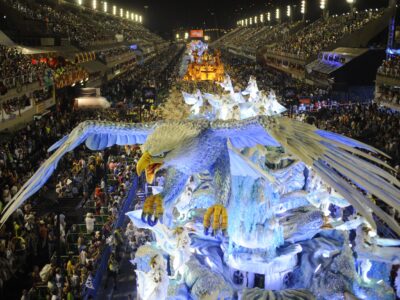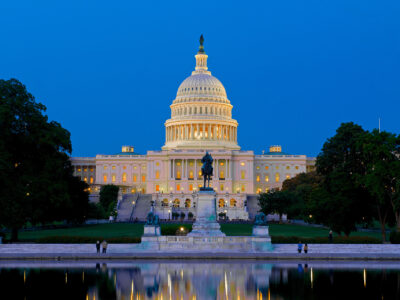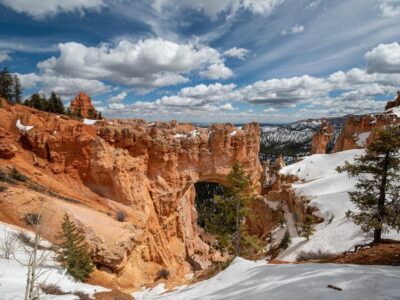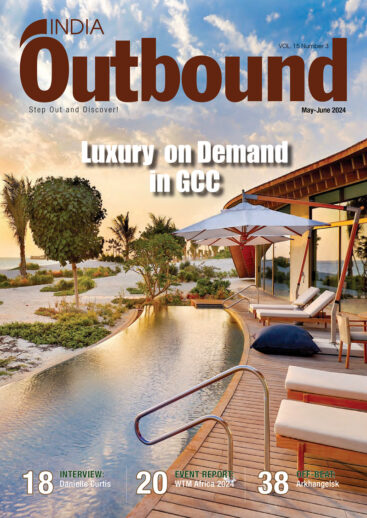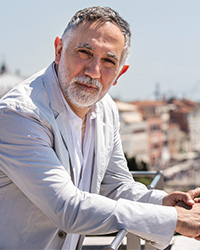
Hashim Sarkis, curator of the Venice Architecture Biennale
When you decided to go ahead with the Biennale despite the uncertainty over pandemic, what were your predictions about the success and what were the main pitfalls on your way?
Several times, I wanted to say that the preparations started in late 2018, picked up pace in 2019, but in early February 2020, when time had come to announce the participants, then we had to postpone the Biennale. At time, Lombardy and other parts of northern Italy were facing a major healthcare crisis due to the pandemic and we had no idea what it was all about. So, the Biennale wisely chose to postpone initially to August and then we postponed by a whole year and during that period obviously we let all the architects who had been invited to stay where they were.
Then, once we came to know what the pandemic was and when vaccination started, we realised that we could possibly open in May. So, we reached out and communicated with the participants, obviously there were some participants who could no longer participate because of some major changes in their lives, some others had major difficulties in shipping, we helped them and some others had problems in sending their teams, but we worked around that to be able to accommodate those installations with the help of teams here in Venice.
Luckily, a week before the opening, Europe opened its borders internally and we had an amazing turnout. Up to today, the Biennale 2021 has attracted more visitors than the other biennales before it by 16 pc.
Three months on since the inauguration, how do you rate the success of the show?
We were the first big show to open after the pandemic in Venice and therefore it was a major curiosity for many people. People came here as they were thirsty for culture and they wanted to visit Venice. People thought that the question (the theme of Biennale 2021) was pertinent to the situation of the moment on “How will we live together” and people also came from Central Europe and from everywhere else around the world. And, in that sense I feel we lucked out, we took a risk, I don’t know whether we were courageous or crazy, but it worked. I feel like the public reception generally has been very positive and the press, where we have had a wide range of reviews, has been very receptive to the idea of coming back to the Biennale and also of the theme being a pertinent question for today. Whether some see it as ironic or prophetic, I am not sure, but it is right there.
We still have three more months to go and I am very curious to see how it unfolds and how those opinions form and change and the three coming months would be mostly the schools will restart, the schools of architecture and many of them are holding programmes here in Venice. So, it will be lively debates and discussions around the Biennale. More to come.
What does this year’s theme, “How will we live together?” communicate?
The question is a very ancient question. Every group of people who want to create a city, community, building, house asks the same question We ask it from the household all the way to the scale of the planet. Sometimes, we wait for politicians to give us the answers, but clearly in the past few years we have realised that these big questions like climate change, political polarisation, economical equalities, mass mobility are not getting adequate responses from the politicians, and the political arena has created more divisions and dissolutions than solutions.
So, I thought architects ask this question all the time. We ask it when we build a house, we ask it when we build a city or when we build an institution and every time we ask it we think how it could be better, what if it could be different and so I thought why dont we get architects to ask the question. That’s how it started.
Do you think the technology (virtual reality/ augmented reality and mixed reality) has helped in creating experience spaces for people.
Absolutely. This biennale is very young in terms of participants and this other reality is part of their way of thinking and seeing and we have used it in different ways. One way is communicating online, all of the projects online and that has been very helpful. Another way is in reducing our carbon footprint when we organise conferences, meetings, we didn’t have to travel all the time to get things done. But we have also used it to make our experience more complete. It’s not that virtual technology replaces the physical world, it compliments it, augments it, amplifies it. And this Biennale has been a very experiential biennale probably because when people travel this far to see something, they don’t want to see planned sections of elevation, they can see those online anytime. So, we have had to augment the experience in order to make this Biennale more immersive.
How does Biennale promote diversity as it represents communities from around the world and each community lives in its own manner?
I was hoping to have different answers to our theme and the question of the Biennale and I did get 112 answers. The answers apply to different scales of living together but even within each scale you get to see a different opinion and a different point of view. I don’t think the answer to this question is singular even in our own lifetime when we ask this question about our own lives. We don’t expect to get the answer from one place. We get it from our parents, from our friends, from our schools, from ourselves, from the different groups and communities we live with, our professions, our faith, our affiliations with different organisations.
Have you been able to achieve the degree of diversity that you wanted in terms of participation and visitors here?
The biennale has always been about convening, bringing architecture around the world together, not just to show their work, but to be together, to discuss, to debate, to think about the future together and this happened. I wished we had a different situation where we were able to open to people from all around the world, not just from America and Europe. But the numbers are growing and I am hoping after the third wave, the rest of the world and a broader audience will be able to come and attend the event.
How has the biennale helped restore tourism in Venice and Italy?
The Biennale is an institution and has been here from the 19th century, its initial role was to bring together the European countries, to showcase their art and Italy to be the convener host of all of that. Over the years it has grown from being just Art to architecture, theatre, cinema and it is also very directly linked to the ministry of culture of Italy and the minister came to give away the Golden Lion awards to the participants.
So, Italy sees the event as an outlet and an engine, a platform for the international communities to come together in Italy. Obviously, it is not mass tourism or sightseeing tourism but cultural tourism. In each of the biennales, whether for art, architecture or cinema, all have a different audience that comes to it. So, this particular biennale of architecture tends to attract very young people, more than 50 pc are under the age of 25, many of them students, but I also learnt that more than 50 pc are non-architects. So, there is a very high level of general interest in architecture that you find here as well.
What is the Indian participation like in the Biennale as an exhibitor?
We have a section in the Biennale called cohabitats, where we invited architects from different universities to participate in helping to present how their cities or communities have been living together for a long time. We have Rahul Mehrotra from Harvard University and from Mumbai presenting a very interesting project, the urban corridor that extends from Pakistan to India and how despite the border differences, there has been a flow of exchange and life across this border maintaining the fact that urbanism, space, affinity, always overwhelms politics.
The exhibition is divided into five sections. What is unique about each section of the exhibition.
The sections are a way to break the exhibition into five scales because the question of how we will live together is addressed from the scale of human beings and other bodies to the scale of the planets. So, that’s one way I can answer this question. The other is, scale is how architects think, it represents a very architectural approach to organising information, organising the world and organising space. It starts from big and come down to small or the other way around.
As this biennale is happening during pandemic and climate change, what can one take from Biennale to change one’s lifestyle?
This biennale which is happening during the pandemic is not about the pandemic. However, it is about the causes that lead us to the pandemic, climate change, mass migration, economic inequalities, political polarisation all these challenges are still with us and will be there once it leaves. So we need to address this.








